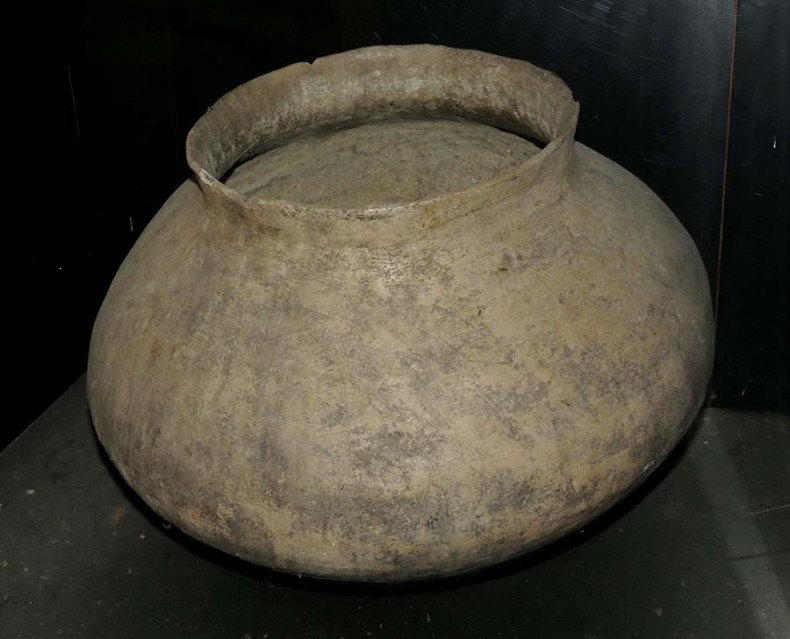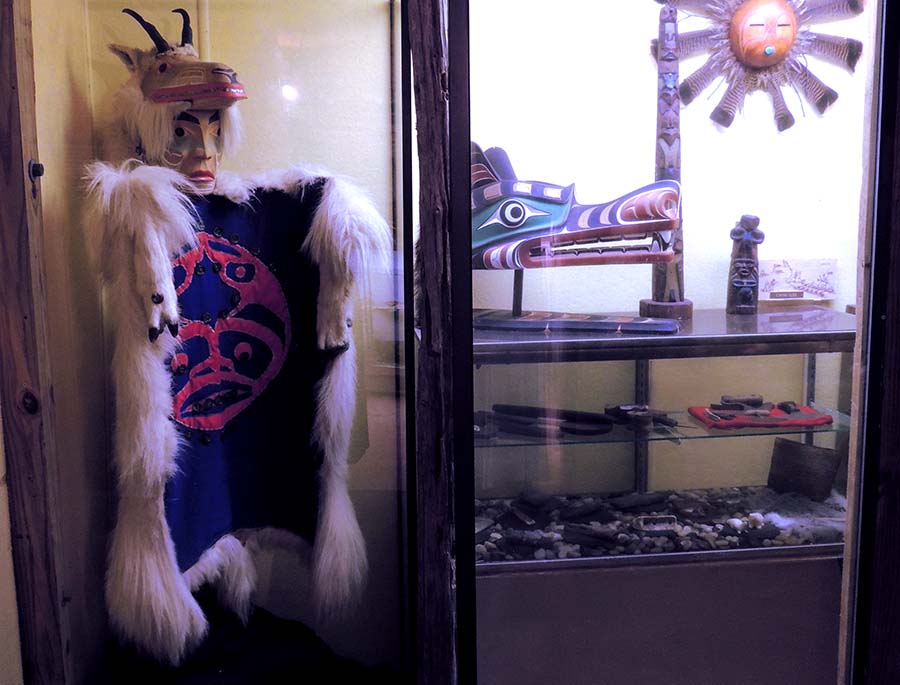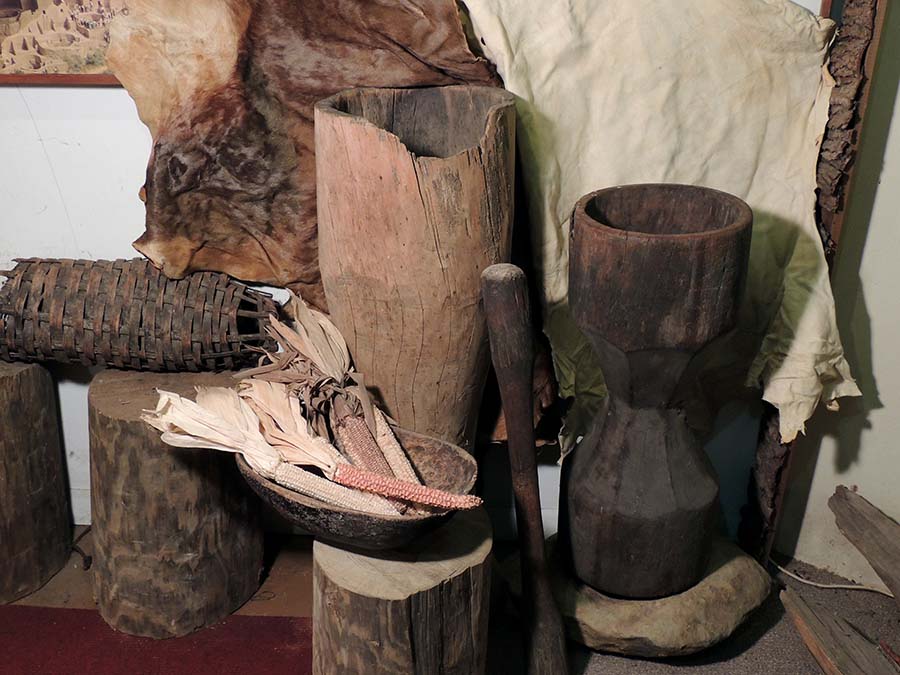Embracing Native American History, Culture
By Karen Olson House; Photos by Amber Roth
Sometimes the most novel attractions turn up in unexpected places. Take the Frisco Native American Museum on Highway 12, Hatteras Island. Truth is, driving up, you probably won’t be impressed by the squat, aged building. But step inside and you’ll discover a diverse, nationally recognized collection of artifacts. Room after room, the surprises keep a-coming.
There are rare dolls and war clubs, paintings, vintage photographs, maps, dreamcatchers, wood carvings, arrowheads and animal skins. Tools — including pre-Columbian gourd canteens and a shell fishing hook — along with exquisite purses and jewelry, are a testament to their makers’ resourcefulness and patience. Exhibits also include a striking array of baskets and pottery, and tribal police badges and uniforms American Indians wore when they served in the U.S. military.
Museum staff organize artifacts by region, not tribe, with some exceptions (for example, the museum houses the most comprehensive collection of photographs, about 900, currently available on Geronimo’s people, the Chiricahua Apache). Grouping items by region allows staff to display many more artifacts. Dozens of tribes from across the U.S. are represented, including several living or that once lived in North Carolina.
Visitors are free to take pictures throughout the museum.
“We take a different approach when thinking about displaying artifacts,” museum assistant Amber Roth says. “We care about preservation and do the best we can. But if it’s an artifact in storage, who is going to see it? We want visitors to actually see the artifacts, to enjoy them and take a photo that they can share with generations to come.”
The museum is on grounds that the Croatans, a North Carolina tribe, once roamed. As a designated N.C. Environmental Education Center, its nature trails curl through maritime forest and out to a pond. Visitors can see a dugout canoe, burned and scraped the way Native Americans made canoes long ago, and the frame of a longhouse (a permanent home built from wood and bark that houses multiple families).
Thanks to a grant, the museum will begin reconstructing the longhouse in October. It’s also been raising funds to add longhouse furnishings and equipment such as pottery and cat tail mats. Volunteers, many of whom are descendants of Native Americans, will be authentically constructing the items.
Owners Carl and Joyce Bornfriend, both retired teachers, opened the museum in 1987. Carl has been collecting Native American artifacts since he was a boy and Joyce shares his passion for history. They continue to guide the sharing of Native American artifacts, art and culture.
About the Author
Karen Olson House is a contributing editor for Carolina Country.-
Share this story:





